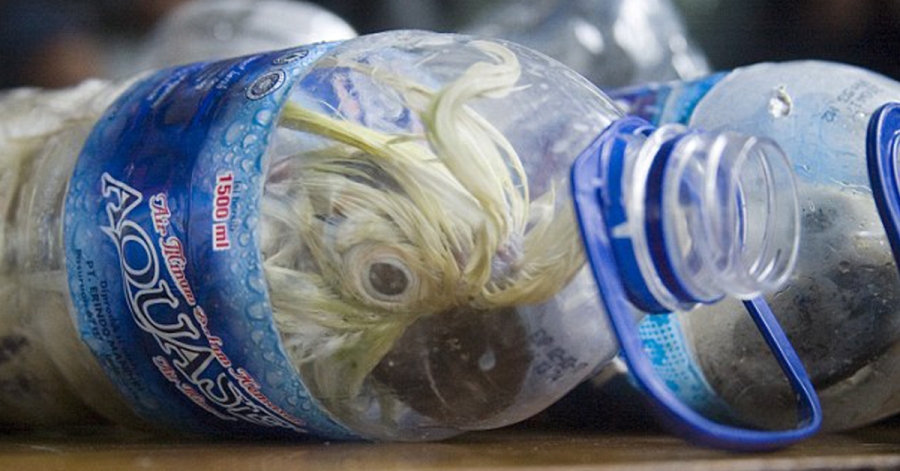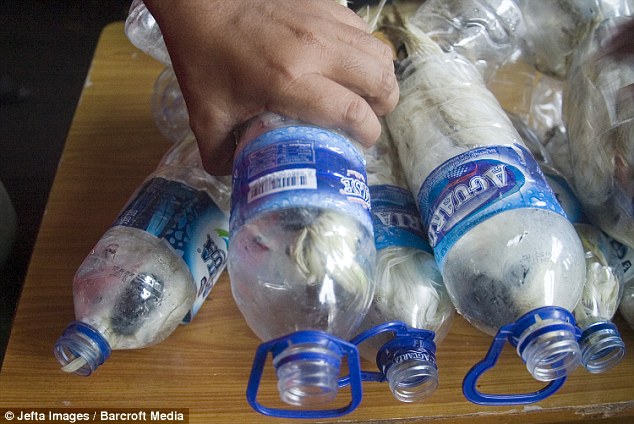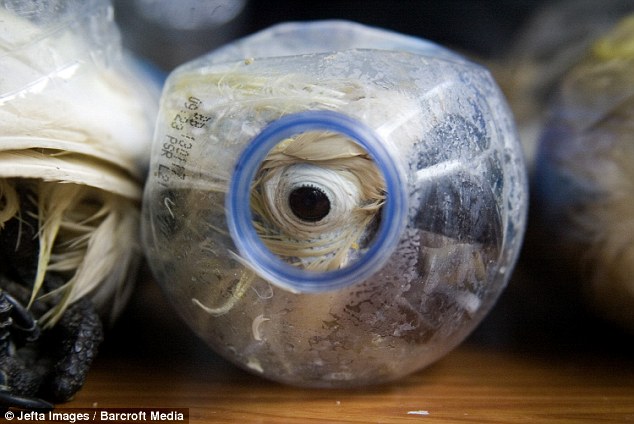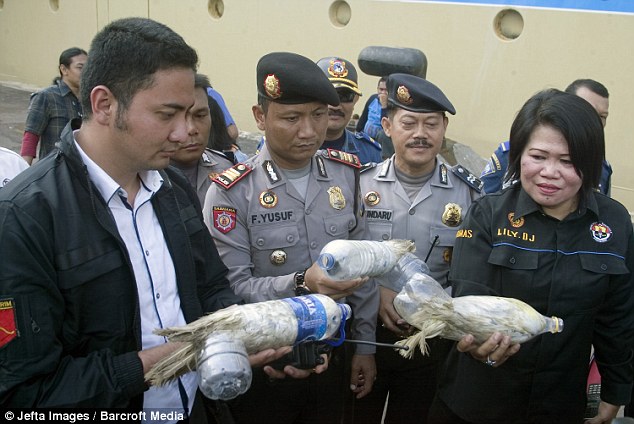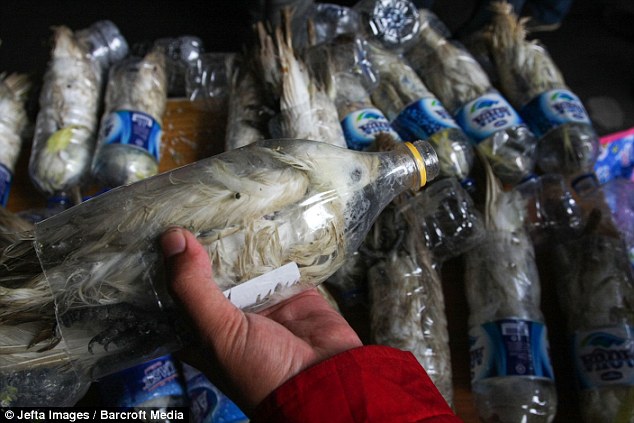Police rescued than 24 endangered cockatoos that were found crammed into water bottles for illegal trade. The smugglers had placed these Yellow crested cockatoos, inside bottles to evade customs at the Port of Tanjung Perak in Surabaya, Indonesia.
However Indonesian Police discovered the birds. Freed them to provide medical care. These birds are highly valuable. Can be sold for up to £650 each. The Yellow crested cockatoo is categorized as an endangered species by the International Union for the Conservation of Nature and Natural Resources.
The population of these cockatoos is dangerously low due to deforestation and poaching. Recent studies indicate that there may be than 7,000 individuals left in existence. Each year over 10,000 parrots (including Lories and Cockatoos) are captured from the wild in North Halmahera, Indonesia feeding into both international wildlife trades.
Sadly 40 percent of these birds perish during the smuggling process. This means that out of every 1,000 parrots seized from the wild an estimated 400 birds die needlessly due to conditions and cruel handling, during poaching, transportation and trade.
Most parrots are prohibited from trade unless they are bred in captivity or authorized by the exporting country.
Crested cockatoos have a breeding rate laying eggs only once, per year. Their reproductive capacity is limited to producing two eggs at a time.
Unfortunately illegal trapping of these birds continues in regions, including Rawa Aopa Watumohai National Park, Buton and Kadatua Islands. However there are reports indicating a reduction in activities on Sumba.
The widespread logging and conversion of forests into land throughout their habitat has worsened their population decline. Additionally the use of pesticides poses a threat to these beautiful creatures.
In terms of characteristics these white birds can vary in size between 12 inches to 27 inches in length and boast a stunning yellow crest.
Their habitats primarily include areas well as cultivated lands found within East Timor and Indonesias islands such, as Sulawesi and the Lesser Sundas.

